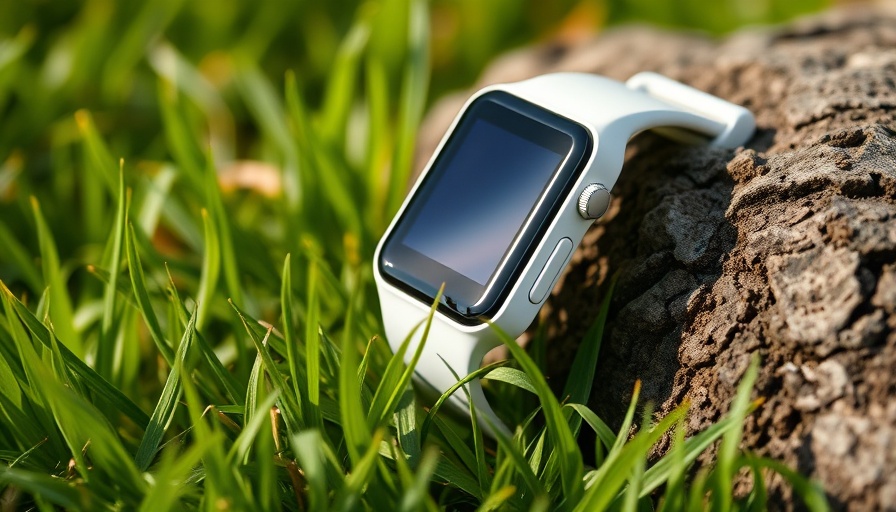
Unlocking Potential: The Role of Fitness Trackers in Modern Health
In an increasingly fast-paced world, where health insights are available at our fingertips, fitness trackers have emerged as powerful tools to enhance performance and overall well-being. These devices, which monitor everything from heart rate and steps taken to sleep patterns and caloric intake, have become popular among both fitness enthusiasts and casual users alike.
However, as beneficial as these gadgets can be, it’s essential to use them wisely—to ensure they support our health journey without overshadowing it. Here, we will explore how to effectively integrate fitness trackers into your routine while maintaining a sense of personal balance and awareness.
Balancing Technology with Self-Awareness
While fitness trackers provide invaluable data, there is a fine line between using the insights to motivate improvement and becoming overly reliant on the numbers. Many individuals might find themselves fixated on daily step counts or heart rate averages, which could lead to anxiety or feelings of inadequacy. Understanding that these devices are merely tools—designed to complement, not control, your wellness journey—is crucial.
Consider tracking how you feel physically and mentally alongside the data from your device. For instance, did a certain workout leave you more energized than another? What was your mood like throughout the day? This self-awareness allows you to appreciate your body’s nuanced responses rather than solely relying on metrics.
Using Trackers to Set Realistic Goals
Fitness trackers are fantastic for goal-setting. But when setting these targets, it’s essential to ensure they are realistic and aligned with your personal health aspirations. Start with achievable goals that resonate with both your physical capabilities and lifestyle. For example, if you’re looking to improve endurance, instead of viewing daily step counts as a chore, aim for a gradual increase over time. Research shows that establishing small, incremental goals contributes significantly to sustained motivation and success.
Listening to Your Body: A Counterpoint to Tracker Data
A compelling aspect of health is that everyone’s body responds differently. While your fitness tracker might suggest you should exercise more intensely or frequently, your body may not agree. Engaging in fitness without understanding your body’s signals can lead to burnout or injury.
Taking time for mindful introspection on how you’re feeling, both physically and mentally can be more beneficial. If your tracker suggests a high level of exertion but you’re feeling fatigued, it may be wiser to focus on recovery instead. This counterbalance is a reminder that the most effective health regimen is one that includes both mind and body awareness.
Incorporating Social Engagement with Technology
One of the unique benefits of many fitness trackers is their ability to foster social interaction—a factor that greatly enhances motivation and accountability. Many devices offer social platforms where you can connect with friends or join community challenges. This can provide not only encouragement but also a chance to share experiences and celebrate successes.
Consider participating in group workouts or challenges, which not only benefit your physical activity level but can also boost your mental well-being. Engaging in shared fitness experiences creates a sense of community; this connection can drive you to stick with your routine longer than would be possible alone.
Practical Tips for Mindful Tracking
To make the most out of your fitness tracker while maintaining a healthy relationship with it, consider these practical tips:
Schedule Check-Ins: Set aside specific times to review your progress rather than constantly checking throughout the day, which may lead to unnecessary stress.
Focus on Quality Over Quantity: Instead of fixating on the number of steps taken, pay attention to the quality of movements and their impact on your overall well-being.
Celebrate Non-Scale Victories: Recognize improvements that may not be quantifiable but contribute to your happiness, like feeling more energetic or sleeping better.
Take Digital Detox Days: Allow yourself regular breaks from tracking—use this time to reconnect with yourself and your activities free from numerical pressures.
Embrace the Journey: Remember that the path to health is a lifelong journey. Emphasizing enjoyment and fulfillment over fixation on metrics will lead to sustainable changes.
Being Mindful in Brighton: Local Health and Wellness Resources
For residents of Brighton, incorporating local health and wellness resources can enhance the use of your fitness tracker. From community-supported health fairs to wellness events, there are numerous opportunities to connect and engage with like-minded individuals. Exploring Brighton health and fitness options makes your fitness journey about community and connection.
Local fitness studios often offer group sessions that blend technology, social engagement, and professional guidance making them ideal companions to your fitness tracker. Additionally, participating in community challenges not only fuels motivation but fosters a strong support system in your wellness journey.
The Future: Fitness Trackers and Holistic Health
As technology continues to evolve, the potential for fitness trackers to promote holistic health will only expand. Innovations in wearables are paving the way for a more integrated approach to health monitoring, encouraging balances between physical fitness and mental wellness. The future may hold trackers that not only measure heart rates but also assess stress levels or offer real-time mindfulness prompts.
With a forward-thinking approach to wellness, embracing both technology and personal insights can foster a richer, more fulfilling health journey.
In conclusion, leveraging fitness trackers can elevate your wellness experience significantly when used with mindfulness, self-awareness, and community connection. Balance is key, allowing technology to enhance—rather than dictate—your lifestyle choices. Ultimately, the aim should always be to enhance your well-being while maintaining a holistic connection with yourself.
 Add Row
Add Row  Add
Add 




 Add Row
Add Row  Add
Add 

Write A Comment